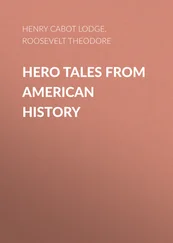The American woman also came of age in the 1920s, emerging from subjugation to straitlaced Victorian ideals of decorum and femininity. Women joined the work force in increasing numbers, and they became lively participants in the intellectual life of the nation. The most profound step toward the liberation of American women was the ratification of the 19th Amendment to the U.S. Constitution, which gave women the right to vote.
There was growing liberation, too, for another long-oppressed group: African-Americans. Slavery had ended with the Civil War, but blacks hardly enjoyed the same opportunities and privileges as most other Americans. In the North as well as the South, blacks were discriminated against in education, employment, housing, and in just about every other phase of life. Segregation was de facto in the North—unofficial, but nonetheless real—and de jure in the South—actually mandated by law. African-Americans had served with distinction during World War I but were put into segregated units. The French did not discriminate against blacks, and for some African-American soldiers, the overseas experience was an eye-opener. They returned to the States no longer willing to accept second-class citizenship.
Many white Americans did not so much discriminate against blacks, as they failed to see them, as if they were invisible. Excluded from positions of power and influence, African-Americans simply did not much matter—as far as mainstream white society was concerned.
The humble peanut helped to change this attitude. In 1921, George Washington Carver, who had been born a Missouri slave in 1864, testified before Congress on behalf of the National Association of Peanut Growers to extol and explain the wonders of what had been a minor crop. Against all odds, Carver had worked his way through college, earning a master’s degree in agriculture in 1896 and accepting a teaching position at Tuskegee Institute. Tuskegee had been founded in Alabama by African-American educator Booker T. Washington (11856-1915) as a source of higher education for blacks. At Tuskegee, Carver concentrated on developing new products from crops—including the peanut and the sweet potato—that could replace cotton as the staple of southern farmers. Cotton was a money maker, but it quickly depleted soil, and farmers solely dependent on cotton soon were ruined. Carver transformed peanuts and sweet potatoes into plastic materials, lubricants, dyes, drugs, inks, wood stains, cosmetics, tapioca, molasses, and most famously, peanut butter. His contribution to revitalizing the perpetually beleaguered agricultural economy of the South was significant; but even more, Carver showed both white and black America that an African-American could accomplish great things. For blacks, he was a source of pride; for white Americans, he was the first culturally visible black man.
Indeed, while oppression was still a fact of African-American life during the 1920s, white intellectuals became intensely interested in the intellectual and artistic creations of blacks. African-American artists and writers were drawn to New York City’s Harlem neighborhood, where they produced works that drew widespread attention and admiration. This literary and artistic movement was called the Harlem Renaissance and drew inspiration from the black political leader W.E.B. Du Bois (1868-1963). Du Bois edited The Crisis, the magazine of the National Association for the Advancement of Colored People (NAACP), an important organization founded in 1909 by a group of black as well as white social thinkers. Du Bois argued that blacks could not achieve social equality by merely emulating whites, but that they had to awaken black racial pride by discovering their own African cultural heritage. Some significant American writers associated with the movement Du Bois was instrumental in launching were poet Countee Cullen (1903-46), novelist Rudolph Fisher (1897-1934), poet-essayist Langston Hughes (1902-67), folklorist Zora Neale Hurston (1901-60), poet James Weldon Johnson (1871-1938), and novelist Jean Toomer (1894-1967).
Harlem became a popular spot for white nightclubbers seeking first-class jazz from great African-American musicians like Fletcher Henderson (1898-1952), Louis Armstrong (1900-1971), and the young Duke Ellington (1899-1974). The neighborhood also developed into a gathering place for avant-garde white intellectuals who did what would have been unthinkable just a decade before: they spoke and mingled with African-American writers, artists, and thinkers.
The general liberalization of morals that accompanied America’s entry into World War I fueled a temperance movement that culminated in the 18th Amendment to the Constitution, prohibiting the sale, importation, or consumption of alcoholic beverages anywhere in the United States. The Volstead Act, passed after ratification, provided for federal enforcement of Prohibition.
Greeted by some as a “noble experiment,” Prohibition was for a majority of Americans an invitation to violate the law. The 1920s, therefore, became by definition a lawless decade. Otherwise law-abiding citizens made bathtub gin, brewed homemade beer, fermented wine in their cellars, and frequented “blind pigs” and “speakeasies”—covert saloons that served booze in coffee mugs and teacups. Police raids on such establishments were common enough, but mostly, officials looked the other way—especially if they were paid to do so.
Corruption hardly stopped with the cop on the street. City and state governments were receptive to payoffs, and indeed, the presidential administration of Warren G. Harding rivaled that of Ulysses S. Grant for scandals. In this national atmosphere, mobsterism came to birth and flourished. Underlying the violence was the idea of crime as a business, and by the end of the decade, a quasi-corporate entity called the Syndicate would be formed to “organize” crime.
Countdown to Black Tuesday
If morals, mores, and ideas were freewheeling in the 1920s, so was spending. For most—except farmers and unskilled laborers—the decade was prosperous, sometimes wildly so. Americans speculated on stocks in unprecedented numbers, often overextending themselves by purchasing securities “on margin,” putting down as little as 10 cents on the dollar in the hope that the stock would rise fast and far enough to cover what amounted to very substantial loans.
The fact was that so much stock had been bought on margin—backed by dimes rather than dollars—that much of it amounted to little more than paper. Even worse, although production in well-financed factories soared, the buying power of consumers failed to keel) pace. Soon, industry was making more than people were buying. As goods piled up and prices fell, industry began laying off workers. People without jobs do not buy goods. As more workers were laid off, the marketplace shrunk smaller and smaller. Companies do not make new hires in a shrinking marketplace. And so the cycle went.
Despite this cycle, stock prices continued to spiral upward. But the market showed warning signs of instability. During the autumn of 1929, stock prices fluctuated wildly, then, on October 24, the stock market was seized by a selling spree. Five days later, on October 29, “Black Tuesday,” the bottom fell out and stock prices plummeted. With prices falling, brokers “called” their margin loans, demanding immediate payment in full on stocks that were now worthless. Many investors were wiped out in an instant. A rash of suicides swept the business community; some investors actually leapt from Wall Street high-rise windows.
Читать дальше












